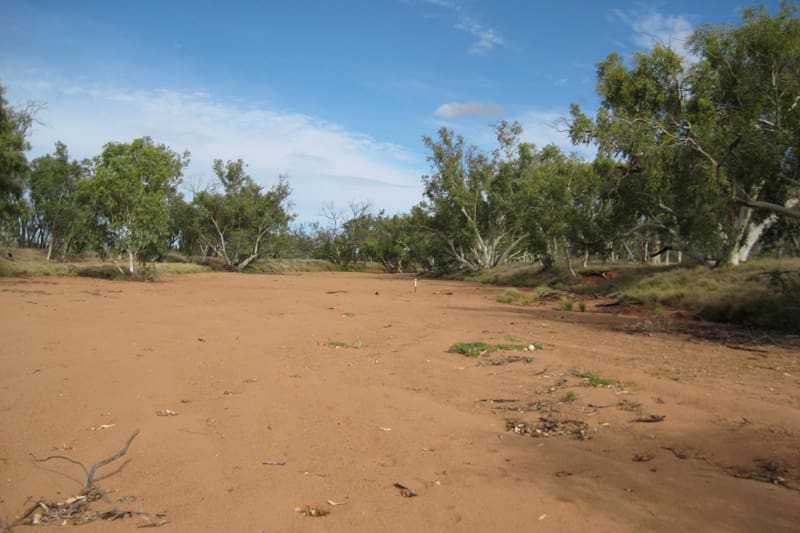
Most of Australia’s million-plus rivers are intermittent like the Woodforde River in central Australia . Photo: Margaret Shanafield
HYDROLOGY of inland rivers which flow intermittently is seldom recognised in large-scale river analysis but researchers in many countries are sharing information about non-perennial rivers, according to Flinders University hydrology researcher Margaret Shanafield.
Dr Shanafield has called for collaboration to build understanding of flora, fauna and hydrology in the 70 per cent of Australia’s rivers that go dry.
“Australian researchers must come together across disciplines to discuss and begin addressing short-term and long-term data needs, knowledge gaps, and research directions to address Australia’s pressing need for better understanding and management of its unique waterways,” she said.
“Let’s talk about rivers that go dry. We must include non-perennial, temporary, intermittent or ephemeral flows in our conversations about Australia’s waterways.
“Non-perennial rivers are a major and growing part of the global river network. New research and science-based policies are needed to ensure the sustainability of these long-overlooked waterways.
Understanding flow is key to river health
“I think especially given the low/no flows and fires this year, we need to understand how catchments produce flow.”
This argument is explored in the paper “What Triggers Streamflow for Intermittent Rivers and Ephemeral Streams in Low‐Gradient Catchments in Mediterranean Climates,” to which she contributed with Karina Gutiérrez‐Jurado, Daniel Partington, Okke Batelaan and Peter Cook, published in Water Resources Research journal.
While Australia has more than one million rivers, over 70pc are dryland rivers and flow for only part of the year – and typically these aren’t recognised as rivers in large-scale analyses.
More scientific papers are examining various landscape and hydrological features look at river width, length and flow on a global scale.
Much of the research work that has been done on non-perennial rivers has been focused on the ecology. Less is known about the hydrology, including streamflow generation and cessation mechanisms. Likewise water balance, the relative roles of evaporation and infiltration, of these waterways.
“There is little overarching work to link all the case studies together into a broader understanding of river systems.
Hydrology knowledge global
“We also don’t clearly understand how the flora, fauna, and hydrology fit together, and how humans impact these systems for the better and worse.
“For this to change in Australia, we need scientists and water managers to come together and discuss their knowledge within an interdisciplinary context.”
Networks of researchers from different fields in Europe and the US have started meeting to discuss commonalities and knowledge gaps about non-perennial rivers. However, despite the much higher prevalence of these dryland systems in Australia, there is still no network in Australia devoted to understanding our wealth of dryland river systems which extend far beyond the Murray Darling Basin.
“It is now clear that flow regimes have changed in many of our rivers, and the consequences have been severe, highlighted by news reports about the drying of the Darling River in Spring 2019.
“Improved research will be a key to avoiding the damage caused by similar events in the future.”
Source: Flinders University
Dr Margaret Shanafield is senior lecturer in hydrology at the College of Science and Engineering, Flinders University, South Australia.

HAVE YOUR SAY